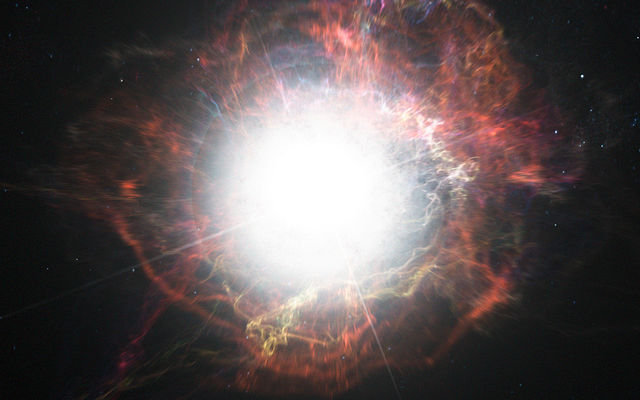An Interstellar Cloud is generally an accumulation of gas, plasma, and dust in our and other galaxies. Put differently, an interstellar cloud is a denser-than-average region of the interstellar medium, the matter and radiation that exists in the space between the star systems in a galaxy. Depending on the density, size, and temperature of a given cloud, its hydrogen can be neutral, making an H I region; ionized, or plasma making it an H II region; or molecular, which are referred to simply as molecular clouds, or sometime dense clouds. Neutral and ionized clouds are sometimes also called diffuse clouds. An interstellar cloud is formed by the gas and dust particles from a red giant in its later life.
A small part of the emission nebula NGC 6357. It glows with the characteristic red of an H II region.
Reflection nebula IRAS 10082-5647 observed by the Hubble Space Telescope.
Cosmic dust – also called extraterrestrial dust, space dust, or star dust – is dust that occurs in outer space or has fallen onto Earth. Most cosmic dust particles measure between a few molecules and 0.1 mm (100 μm), such as micrometeoroids. Larger particles are called meteoroids. Cosmic dust can be further distinguished by its astronomical location: intergalactic dust, interstellar dust, interplanetary dust, and circumplanetary dust. There are several methods to obtain space dust measurement.
Porous chondrite dust particle
Artist's impression of dust formation around a supernova explosion.
Zodiacal light caused by cosmic dust.
Cosmic dust of the Andromeda Galaxy as revealed in infrared light by the Spitzer Space Telescope.






